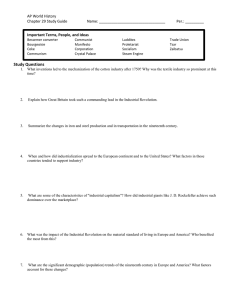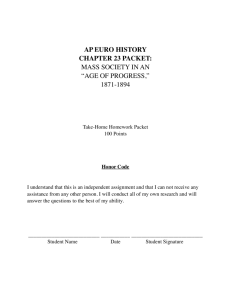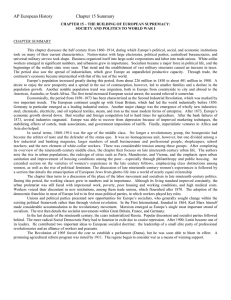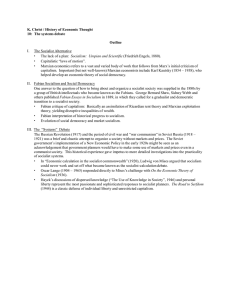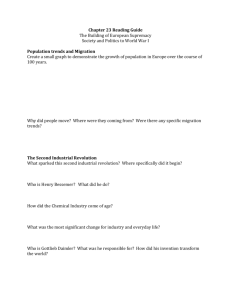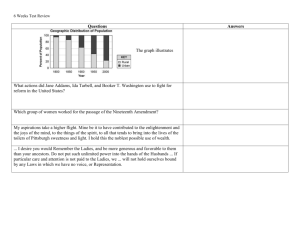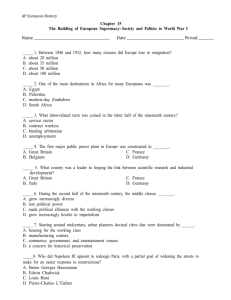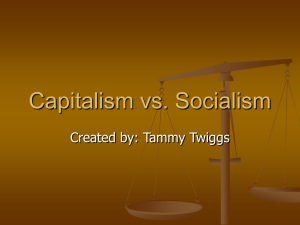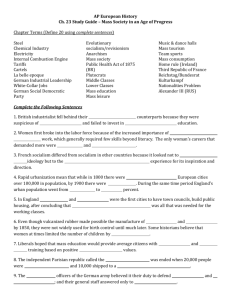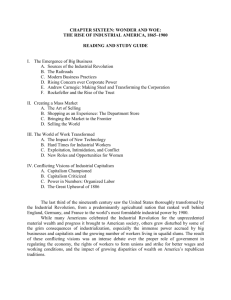AP US History –
advertisement
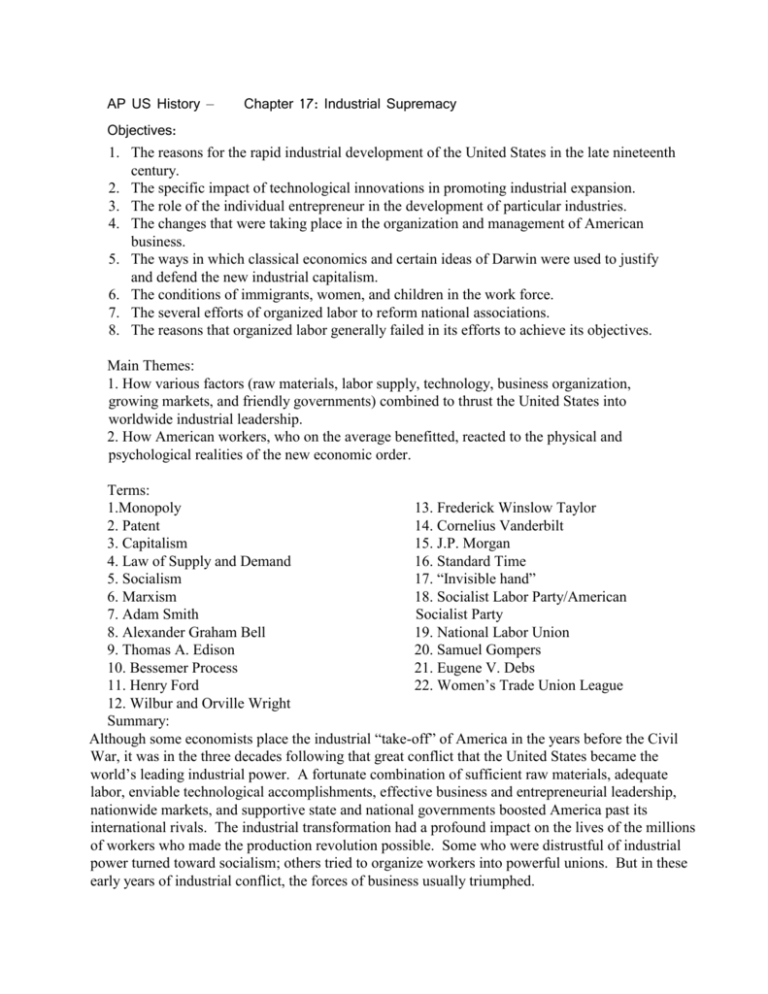
AP US History – Chapter 17: Industrial Supremacy Objectives: 1. The reasons for the rapid industrial development of the United States in the late nineteenth century. 2. The specific impact of technological innovations in promoting industrial expansion. 3. The role of the individual entrepreneur in the development of particular industries. 4. The changes that were taking place in the organization and management of American business. 5. The ways in which classical economics and certain ideas of Darwin were used to justify and defend the new industrial capitalism. 6. The conditions of immigrants, women, and children in the work force. 7. The several efforts of organized labor to reform national associations. 8. The reasons that organized labor generally failed in its efforts to achieve its objectives. Main Themes: 1. How various factors (raw materials, labor supply, technology, business organization, growing markets, and friendly governments) combined to thrust the United States into worldwide industrial leadership. 2. How American workers, who on the average benefitted, reacted to the physical and psychological realities of the new economic order. Terms: 1.Monopoly 13. Frederick Winslow Taylor 2. Patent 14. Cornelius Vanderbilt 3. Capitalism 15. J.P. Morgan 4. Law of Supply and Demand 16. Standard Time 5. Socialism 17. “Invisible hand” 6. Marxism 18. Socialist Labor Party/American 7. Adam Smith Socialist Party 8. Alexander Graham Bell 19. National Labor Union 9. Thomas A. Edison 20. Samuel Gompers 10. Bessemer Process 21. Eugene V. Debs 11. Henry Ford 22. Women’s Trade Union League 12. Wilbur and Orville Wright Summary: Although some economists place the industrial “take-off” of America in the years before the Civil War, it was in the three decades following that great conflict that the United States became the world’s leading industrial power. A fortunate combination of sufficient raw materials, adequate labor, enviable technological accomplishments, effective business and entrepreneurial leadership, nationwide markets, and supportive state and national governments boosted America past its international rivals. The industrial transformation had a profound impact on the lives of the millions of workers who made the production revolution possible. Some who were distrustful of industrial power turned toward socialism; others tried to organize workers into powerful unions. But in these early years of industrial conflict, the forces of business usually triumphed. AP US History – Chapter 18: The Age of the City Objectives: 1. The changes in the pattern of immigration in the late nineteenth century. 2. The early rise of mass consumption and its impact on American life, especially for women. 3. The changes in leisure and entertainment and the growth of mass-culture opportunities including organized sports, vaudeville, movies, and other activities. 4. The main trends in literature and art during the late nineteenth and early twentieth century. 5. The impact of the Darwinian theory of evolution on the intellectual life of America. 6. The profound new developments in American educational opportunities. Terms: 1.Immigrant ghettoes 9. Scott Joplin 2. Reform Judaism 10. William Randolph Hearst 3. “Streetcar Suburbs” 11. “Yellow Journalism” 4. William M. Tweed 12. “Land-grant” College 5. Sear Roebuck 6. George M. Cohan 7. Irving Berlin 8. Vaudeville Summary: In the years after the Civil War, America’s cities boomed as people left the rural areas of Europe and the United States to seek the jobs abd other attractions offered by American cities. The cities’ rapid growth caused many problems in housing, transportation, and health. Technological attacks on these problems barely kept pace, and city governments often resorted to boss rule to cope. The booming cities were places of intellectual ferment and cultural change. Urban dwellers found many ways to enjoy increased leisure time. Many Americans wanted to prove to skeptical Europeans that the nation had cultural as well as economic accomplishments to admire. American culture became more uniform through free public education, mass-market journalism, and standardized sports. Higher education, especially new state universities, reached out to a wider market. More and more women attended in coeducational and single sex institutions.
